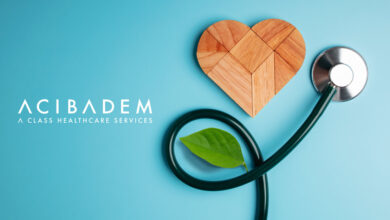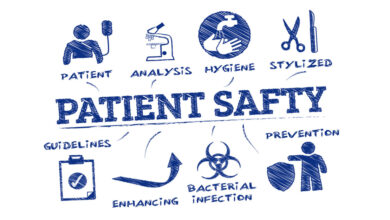Overcome thirst during Ramadan between facts and myths!
Overcome thirst during Ramadan
between facts and myths!


Dietician at the Al Ahli Hospital
With the beginning of the Holy Month of Ramadan, and it coincided with the hours of working days in the summer, thirst has become an essential concern to many because of the high temperature and the length of the fasting period to more than 16 hours a day so that the individual loses large quantities of water in the form of sweat and the body’s attempt to compensate periods of water cuts during fasting to withdraw water from the cells and the blood. To help our bodies maintain hydration and push away the feeling of thirst and reduce its severity, kindly follow the basics of healthy nutrition during the month of fasting, because spending some effort to avoid thirst is easier than enduring the suffering of feeling it!
Fasting people turn dramatically and intensely to cold Ramadan drinks during the Holy Month, including: tamarind, carob, and of course kamarelddin and aljellab. These beverages high in calories -at least 200 calories- and sugar urges the body to diuresis and weight gain and the feeling of thirst during fasting hours. These drinks can be replaced with fresh unsweetened juices like orange juice, lemon mint and mint with ginger drink, etc. Because they contain minerals and vitamins in a condition to not exceeding one cup per serving. For example, the hibiscus drink soaked is useful for patients with high blood pressure, also keeps the body from dehydration, one cup of hibiscus drink provides 25 calories only, and preferably not to add sugar to avoid increasing its calories content.
Water cannot be replaced by another drink and advised to take two liters of it daily. Usually, people drink a large amount of very cold or iced water at the start of Iftar and during eating and directly after it, which causes some digestive disorders because the large amount of water prevents the secretion of gastric juices; for this mineral water must be mild or moderate cold, and drink small amounts of water about two hours after Iftar, in the intervals of the night until Suhoor and not only on Suhoor without relying on feeling thirsty for drinking.
Preferably, delay Suhoor as much as possible to after midnight, the Suhoor meal can be a light meal of proteins, complex carbohydrates that stay long in the intestines, and fresh fruits and vegetables that contain good amounts of water and fiber; thereby reducing the feeling of hunger and thirst.
The vegetables and fruits contain potassium responsible for maintaining water balance within cells, such as tomatoes, potatoes, white beans and of course banana, dried apricots and dates … and potassium is also important for the metabolism of sugars elements and the action of insulin in the body especially the diabetics type II. Eating, in moderation, fruit-filled with water and vitamins like watermelon, oranges and grapes instead of Ramadan sweets high in sugars can prevent you from severe weight gain and severe thirst.
It should also be noted that there are many food items that increase water loss from the body leading to thirst, for instance sodium as an ingredient of salt and salty food like pickles increases the body need for water, so it is advisable to avoid adding too much salt to food, and stay away from these foods. Strong spices and seasonings require drinking large amounts of water; because when consuming these foods, water is absorbed from the pharynx, mouth and stomach; so the fasting person should avoid eating spicy foods, especially in Suhoor meal.
Tea and coffee contain caffeine, which enhances the role of kidney to get rid of the water; and soft drinks containing carbon, which prevents the body from using fluid, so it is advised to reduce drinking these stimuli, especially on Suhoor.
Fasting is a cure for the body and it is also essential to make Iftar rich in food elements that prevent certain diseases and follow healthy eating habits that enable us to continue fasting in this Holy Month.
















